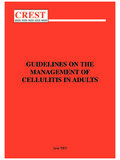Transcription of ESSENTIAL STEPS IN THE MANAGEMENT OF …
1 1 ESSENTIAL STEPS IN THE MANAGEMENT OF common conditions associated with maternal mortality NATIONAL DEPARTMENT OF HEALTH SOUTH AFRICA 2 CONTRIBUTORS L Bamford E Buchmann S Fawcus N Khaole G Lamacraft H Lombaard M Masasa S Monokoane J Moodley R C Pattinson C Rout M Schoon W Steyn M Titus S Velaphi 3 CONTENTS Page Contributors Introduction General Points References 1. HIV General STEPS 2. Severe Pre-eclampsia and Eclampsia 3. Emergency MANAGEMENT of Post-partum Haemorrhage (PPH) 4. Complications during Obstetric Anaesthesia 5. Cardiac Arrest in Pregnancy 6. Algorithm for Neonatal Resuscitation 7. Breech Presentation Labour and Delivery 8. Cord Prolapse 9. Shoulder Dystocia 10. The MANAGEMENT of Severe Pregnancy Related Sepsis 4 INTRODUCTION The reduction of maternal and neonatal deaths is one of the key goals of the Millennium Declaration.
2 An important factor in reaching this goal is the provision of clinical guidelines, protocols and manuals for the clinical MANAGEMENT of the major causes of maternal mortality . Furthermore, it has been estimated that 70% of neonatal deaths could also be prevented if good quality maternal health care is provided. This publication has been purposefully structured in a step-wise user-friendly format so that it could be kept by all health care givers for use at the bed-side . It includes the ESSENTIAL STEPS in the MANAGEMENT of common conditions associated with maternal mortality . Where possible, the ESSENTIAL points in clinical MANAGEMENT are structured in the forms of algorithms for ease of learning and implementation of knowledge gained into clinical practice. Furthermore, the format of this publication may also lend itself to fire drills.
3 A Fire Drill is an organised event in which health care givers (clinicians, midwives, nurses and skilled attendants) will go step-wise through a mock situation to ensure competencies and administrative necessities / support (equipment, drugs, human resources) for that particular situation or obstetric condition. It is hoped that this publication will improve the quality of care for some of the common conditions , which cause maternal deaths, viz. non-pregnancy related infections, hypertensive disorders of pregnancy and post partum haemorrhage. J Moodley Chairperson, NCCEMD 2007. 5 GLOSSARY ALT ARV Antiretroviral AST BP Blood pressure COETT CPAP EH Emergency Hysterotomy Hb Haemoglobin HIV Human Immunodeficiency Virus HR Heart Rate ID IMI Intramuscular injection INR IV Intravenous LDH MCS MgS04 Magnesium sulphate MTCT
4 Mother to Child Transmission MVA Manual Vacuum Aspiration PTT UTI Urinary Tract Infection Ventouse Vacuum extraction VQ 6 GENERAL POINTS All health care should be based on the following standards:- o Women treated with respect o Care based on best available current evidence and practice o Health professionals committed to improving care through adhering to standard protocols of clinical MANAGEMENT To achieve the above, acquire and practice effective communication skills o Ensure confidentiality and privacy in all contacts with the woman and her partners o Ensure knowledge of the referral patterns o Prioritise order of treatment 7 1.
5 HIV ESSENTIAL STEPS GENERAL o Offer all women attending a maternal health care facility, HIV testing (follow National Policy on methods for testing and counselling). Testing should be on site and if the woman tests positive, do a CD4 count on the same day.. If ARVs indicated, refer to the local Comprehensive HIV/AIDS Care, MANAGEMENT and Treatment Programme site. This means obtaining CD4 results timeously and fast-tracking the appropriate use of ARVs. o Ensure continued counselling about safe sexual practices for both HIV positive and negative women and if HIV negative, periodic re-testing throughout pregnancy, during any admission to a health facility, and in the puerperium. o If a woman did not agree to testing at the first visit, counselling and the offer of testing must be offered at each subsequent antenatal visit.
6 O The offer of HIV testing should also be made to the woman s partner. o Aim to detect and treat concurrent conditions , viz.: o Sexually transmitted infections o TB o Oral and vaginal thrush o Lymphadenopathy o Herpes zoster (shingles) o Current herpes infections o Strongly consider special investigations, viz.: o Urine culture o XRay chest and sputa for TB (treat on clinical grounds if appropriate; often the sputum is negative in the presence of HIV) o Cervical smear if not done in recent past o A full blood count including a differential count and ESR o Clinically stage HIV according to WHO recommendations. o Remember that prevention strategies remain the mainstay in the fight against HIV infections. Urge the consistent use of condoms, single-partner relationships, and the fact that there is now good evidence from 3 randomised trials that medically performed adult male circumcision will reduce HIV transmission in males by > 50%.
7 ANTENATAL MANAGEMENT In addition to the points above, remember: o Treatment for HIV-infected women if asymptomatic is the same as uninfected women. Continued counselling and advice on protected intercourse should be done regularly. o Consider testing for asymptomatic bacteruria regularly; check for opportunistic infections at each visit, vaginal and chest infections o Avoid invasive procedures. Carefully consider whether external cephalic version should be performed 8 o Advise on STEPS to reduce mother to child transmission including the use of nevirapine once labour is established or appropriate antiretroviral prophylactic regimen according to the policy of the National Department of Health. o Provide advice on nutrition, healthy life style and the use of multivitamins o Advise on safe infant feeding options o Advise on o MTCT risks and prevention o Labour MANAGEMENT o Continuum of care (mother) and infant, and schedule postpartum visits o Discuss contraceptive options.
8 CARE DURING LABOUR o Ensure that nevirapine has been taken by the mother (unless on ARVs) and ensure that the baby has been given nevirapine syrup within 72 hours of birth. Record these events o Limit vaginal examinations and ensure aseptic techniques o Keep the amniotic membranes intact, unless fetal distress or cephalo-pelvic disproportion is suspected o Avoid episiotomy and invasive procedures o If instrumental delivery is indicated, forceps are preferable to the ventouse (vacuum) o Avoid unnecessary suctioning of the neonate s airways o Use prophylactic antibiotics in emergency and elective caesarean sections o Consider strongly, the use of therapeutic antibiotics in cases of prolonged labour; prolonged rupture of membranes and when a caesarean section is performed in the background of these settings.
9 POSTPARTUM CARE o Remember reinforcing the advice on safe infant feeding options o Stress contraceptive advice and services prior to discharge o Ensure that all HIV-infected women are given a definite date for a postnatal visit so that counselling, advice and a planned programme for continued HIV care for the mother and baby can be instituted. If CD4 counts are not available, ensure that a blood draw is obtained for this test and result obtained. o Remember the complications associated with caesarean section done in a background of prolonged labour. Ensure the detection of early clinical signs of sepsis. Consider strongly, the need to observe in hospital for 7-10 days, especially if spikes of temperature are developed or there is tachycardia. Ensure follow-up. 9 SUMMARY STEP 1 STEP 2 STEP 3 STEP 4 Offer HIV testing for all women and their partners attending maternal health facilities Ensure regular counselling on a health life style, safe sexual practice and exclude other STIs and concurrent infections Remember to adhere to aseptic techniques; keep membranes intact in labour.
10 Avoid an episiotomy and ensure that the MTCT programme is strictly Ensure safe feeding options Advise on contraception Ensure follow-up and post-partum visit 10 ALGORITHM : MANAGEMENT OF HIV INFECTION IN PREGNANT WOMEN 1st ANC VISIT Compulsory pre-test counselling VOLUNTARY TESTING HIV NEGATIVE encourage & support condom use or abstinence encourage retest for HIV > 3 months Please record HIV status on client s antenatal card using Share Code HIV POSITIVE Stage the disease Detect & treat OIs Assess eligibility for ARV - clinical staging - CD4 count Repeat ANC Visit Compulsory pre-test counselling CD4 COUNT < 200 > 200 Voluntary Repeat HIV Test Informed consent Record on ANC card If NEGATIVE prevention counseling If POSITIVE confirm, and follow guidelines for HIV positive ARV CLINIC Make an appt for patient with ARV clinic Counsel patient on her eligibility for ARVs Follow-up on her referral to ensure no delays in commencement of ARTs PMTCT Ensure NVP issued > 28 weeks Please record on antenatal card Advise Mother to take NVP when in labour Issue multivitamins to be taken daily Advise on safe infant feeding options Advise on ART / PMTCT follow-up appts during ANC and post delivery Repeat CD4 count 6 monthly Refer to and advise on contraceptive methods Advise on infant testing at 6 weeks (PCR) and 18 months (Rapid Test) 11 2.










